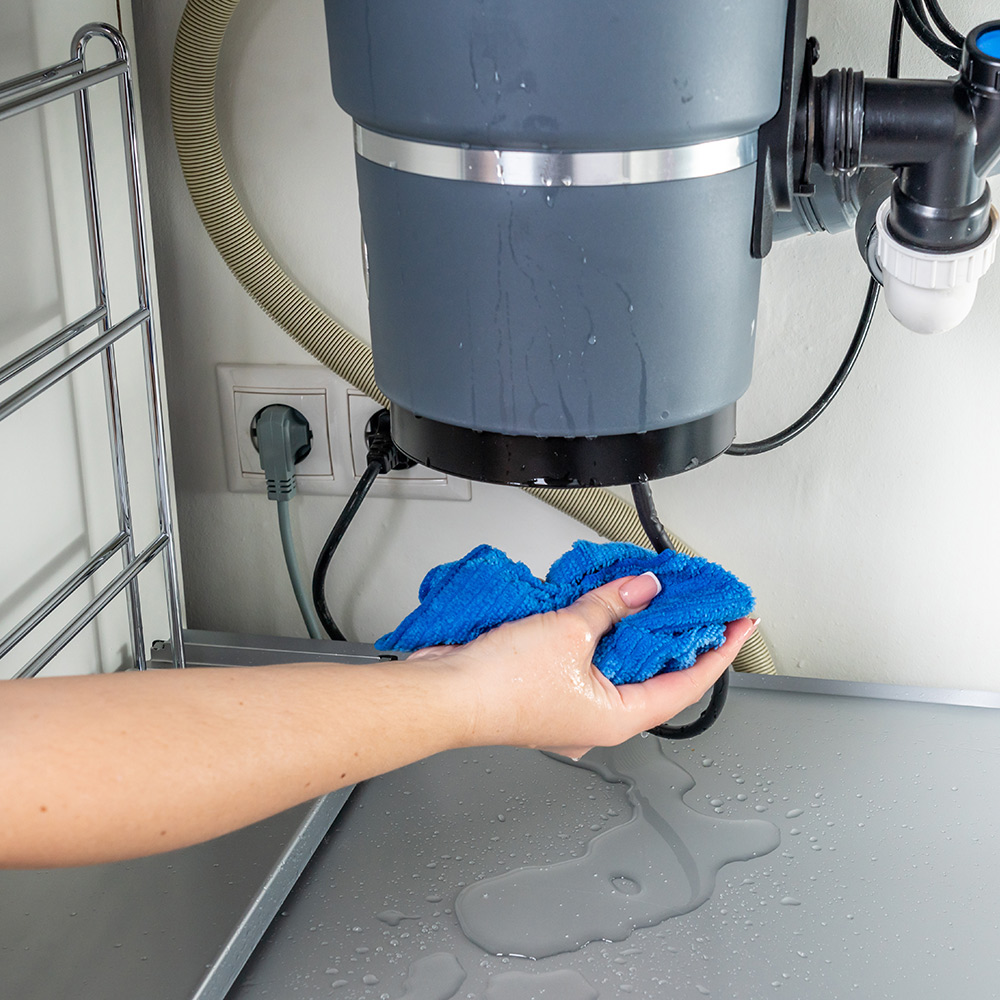Fast Solutions for Fixing a Dripping Waste Disposal Unit
Fast Solutions for Fixing a Dripping Waste Disposal Unit
Blog Article
The article below involving Tips on Fixing a Leaking Garbage Disposal is quite insightful. You should take a peek.

Waste disposal unit are crucial cooking area devices that assist in throwing away food waste effectively. Nevertheless, a dripping garbage disposal can be a discouraging and untidy issue to deal with. Luckily, lots of leakages can be dealt with conveniently with a couple of straightforward actions. In this write-up, we will certainly review just how to deal with a dripping garbage disposal effectively.
Introduction
Waste disposal unit are mounted under cooking area sinks and are made to shred food waste right into smaller items, allowing it to pass through the plumbing system conveniently. While these devices are normally dependable, leaks can take place over time because of damage, loosened connections, or damages to the system.
Usual Root Causes Of Leaks in Rubbish Disposals
Worn Seals and Gaskets
Seals and gaskets play a crucial function in preventing water from leaking out of the waste disposal unit. Gradually, these components can weaken, bring about leaks around the disposal system.
Loose Links
The connections in between the waste disposal unit and the pipes system can become loose gradually, creating water to leakage out throughout operation.
Fractures or Openings in the Disposal Device
Physical damages to the waste disposal unit, such as splits or openings in the housing, can also cause leakages.
Determining the Source of the Leakage
Before trying to repair a dripping garbage disposal, it is essential to identify the resource of the leakage. This can normally be done via visual evaluation or by conducting easy tests.
Visual Assessment
Check the garbage disposal device meticulously for any kind of indications of water leakage. Pay close attention to locations around seals, gaskets, and connection points.
Testing for Leaks
One way to check for leakages is by running water through the disposal device and looking for any visible signs of leakage.
Devices and Materials Needed for Repairing a Dripping Waste Disposal Unit
Prior to beginning the repair service procedure, collect the essential tools and materials, including a screwdriver, flexible wrench, plumbing technician's putty, substitute seals or gaskets, and epoxy or patching product for fixing fractures or holes.
Step-by-Step Guide to Dealing With a Leaking Garbage Disposal
Turn Off the Power
Before trying any type of fixings, make sure that the power to the garbage disposal unit is turned off to stop the risk of electric shock.
Locate the Leakage
Identify the exact area of the leak and determine the cause.
Tighten Links
Make use of a wrench to tighten up any type of loose connections in between the disposal unit and the pipes system.
Change Seals or Gaskets
If the leakage is because of used seals or gaskets, eliminate the old elements and replace them with brand-new ones.
Patching Splits or Openings
For splits or holes in the disposal system, usage epoxy or an appropriate patching product to seal the damaged area.
Checking the Garbage Disposal After Repair
When the repair service is total, check the waste disposal unit by running water through it to ensure that the leak has been fixed.
Preventive Maintenance Tips to Avoid Future Leakages
To stop future leakages, it is essential to execute normal upkeep on your garbage disposal. This includes keeping it clean, staying clear of placing non-food things or difficult items down the disposal, and periodically checking for leakages or various other problems.
Conclusion
In conclusion, repairing a leaking garbage disposal is a fairly straightforward procedure that can be finished with standard devices and materials. By following the actions laid out in this post and practicing preventive upkeep, you can maintain your waste disposal unit in good working problem and avoid expensive repairs in the future.
What to Do About a Leaking Garbage Disposal
A leaking garbage disposal often goes unnoticed until you confront a sopping cabinet, a foul-smelling puddle, or an audible drip-drip-drip from the unit. The fix can be frustrating, too, because the leak can stem from a number of components in the system. Fortunately, with a little sleuthing, you can zero in on the leak and—depending on the exact location—stop the icky oozing and repair the component that caused it. Worst case scenario, if it turns out that the garbage disposal must be replaced, installing a new one is a reasonable do-it-yourself task for those with basic plumbing skills. Read on to keep the cash you’d otherwise hand over to a pro.
Prepare to find the leak
Prior to testing the garbage disposal for leaks, unplug it at the wall outlet and turn off the power from the breaker box to prevent electrical shock. Then insert a watertight sink stopper into your sink drain and wipe the unit dry with a clean cloth. In any handy container, mix a few drops of food coloring into a few cups of water, and pour the dyed water onto the sink stopper to help you locate the leak.
Investigate the source
the top, where the disposal meets the sink drain the side, where the dishwasher hose or main drain pipe connects to the disposal or the bottom of the unit Inspect each of these locations while gliding a light-colored rag over the unit; the dyed water will readily show on the rag and reveal the location of the leak. If a leak isn’t immediately apparent, remove the sink stopper and pour a few more cups of dyed water down the sink drain, then check for leaks again. Leaks near the top of the unit are more likely to show themselves while the sink is plugged, while side and bottom leaks are more noticeable while the sink is unplugged.
The metal sink flange that sits directly inside the sink drain is typically sealed around the top with plumber’s putty (a clay-like sealant) and then secured from under the sink with bolts. If the plumber’s putty deteriorates, or the bolts loosen, the flange can no longer form a watertight seal between the sink drain and the disposal—which could cause a leak at the top of the unit.
To reseal the leaky flange, you must first detach the garbage disposal. Start by loosening the screws securing the main drain pipe to the disposal, then loosen the screws in the metal clamp securing the dishwasher hose to the disposal and detach the drain pipe and dishwasher hose from the disposal. Loosen the screws in the mounting ring that connects the disposal to the metal mounting assembly beneath the sink, then pull down the disposal and carefully set it on a clean, dry surface. Loosen the bolts in the mounting assembly with a wrench, then pull down the mounting assembly and set it near the disposal.

We were guided to that write-up about Why Is My Garbage Disposal Leaking From the Bottom? from an associate on another web property. Liked our blog? Please share it. Let other people check it out. Thanks for going through it.
Call Today Report this page